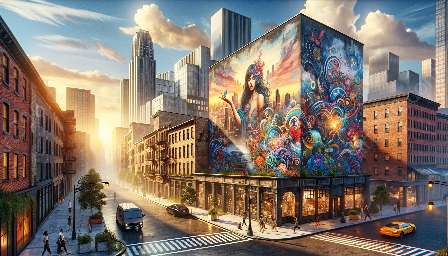Street art is a powerful form of expression that has gained recognition in contemporary culture. The motivations behind creating street art are deeply rooted in psychological, social, and cultural factors, reflecting individual expression, social commentary, and creative freedom. This article delves into the complex psychology behind street art and its impact on society.
Psychological Motivations
Individuals who engage in street art are often driven by a mix of personal, social, and emotional motivations. For some, it serves as a form of self-expression, allowing them to communicate their inner thoughts, emotions, and experiences through visual art. Street art can provide an outlet for individuals to express themselves authentically and creatively, especially in environments where traditional art spaces may not be accessible.
Moreover, street art can be a means of social commentary, serving as a platform to address societal issues, political unrest, and cultural stigmas. Artists may feel a sense of responsibility to use their art to raise awareness and challenge prevailing norms, leveraging their work to spark conversations and provoke critical thinking within their communities.
Artistic Freedom and Rebellion
Street art is often associated with a spirit of rebellion and defiance against traditional artistic constraints. Artists who create street art may seek to reclaim public spaces and challenge the notion of who can be considered an artist. The act of creating art in urban environments can be seen as a rejection of institutional boundaries and a manifestation of artistic freedom.
Furthermore, the element of risk and impermanence associated with street art can be psychologically motivating. The transient nature of street art creates a sense of urgency and spontaneity, challenging artists to adapt to ever-changing environments and embrace the ephemerality of their work.
Impact on Culture and Society
Street art's psychological motivations have a profound impact on culture and society. By providing a creative outlet for marginalized voices and perspectives, street art contributes to the diversification of public spaces and acts as a catalyst for social change.
In addition, street art can imbue urban landscapes with vibrancy and cultural identity, transforming once plain surfaces into captivating visual narratives that reflect the pulse of the community. This infusion of art into everyday environments has the potential to uplift spirits, inspire creativity, and foster a sense of belonging among city dwellers.
Conclusion
The psychological motivations behind creating street art are multifaceted and intertwined with broader social and cultural dynamics. Through individual expression, social commentary, and the pursuit of artistic freedom, street art has become a compelling force in contemporary culture, shaping our perceptions of public space, creativity, and social engagement.

